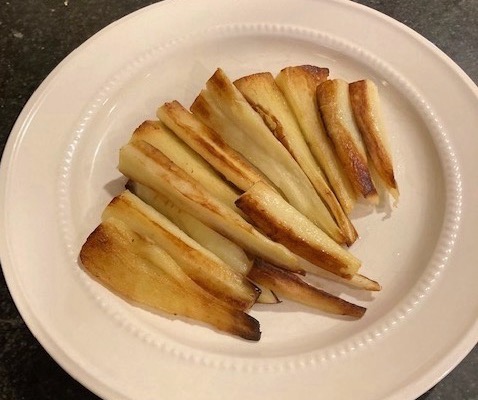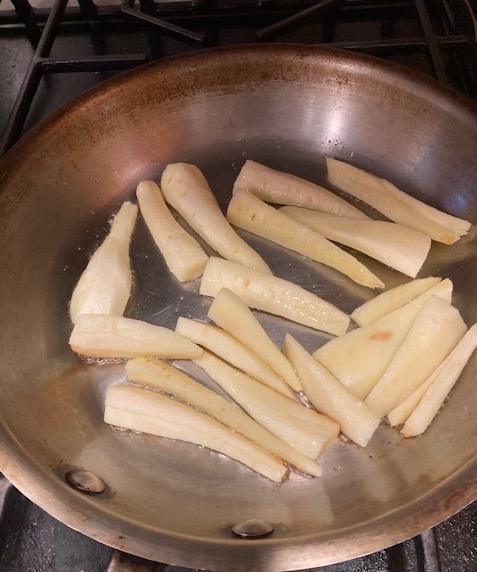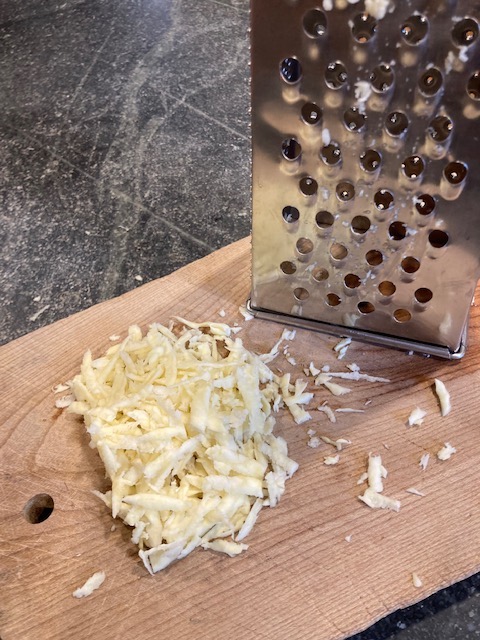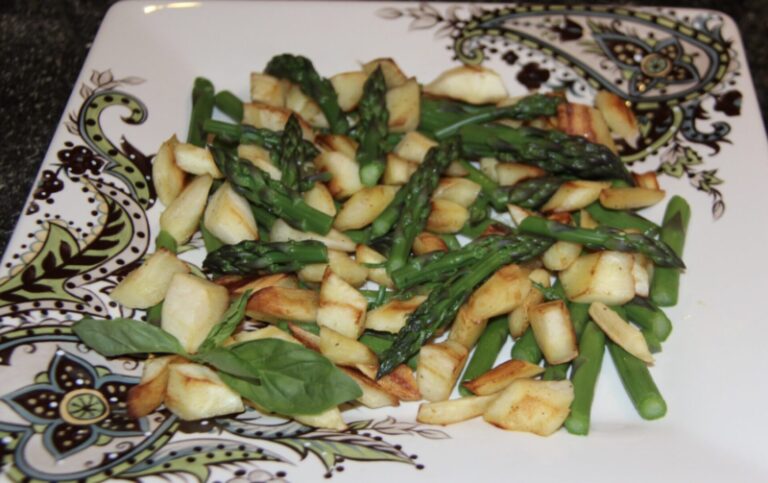
Welcome Spring, and the arrival of parsnips. As more Americans are looking for seasonal produce, parsnips can be an early sign of Spring.
Parsnips have been around for ages, but typically are not as commonly known as other root vegetables like carrots and potatoes. In past decades they have been overlooked and underappreciated, but consider that they are available almost half of the year, they store well, and are packed with antioxidants, vitamins, potassium and fiber. Originally from Eurasia, they were cultivated by the Romans who valued their sweetness and used them for sugar before the introduction of beets.

Parsnips are starchy but once cooked they become tender, and have a sweet and nutty flavor that is more complex than carrots. I think of them as North America’s equivalent to plantains because they can be crisp and savory, or tender and sweet. Parsnips are incredibly versatile and can be roast, fried, sauteed, boiled or eaten raw; they can replace carrots in carrot cake and can even be made into parsnip wine (origin: England). They served as food for people and livestock during the US Colonial era, but once potatoes were introduced from Peru in the 1800s, folks lost interest in the homely parsnip.
Although they are most often seen in markets in the Fall, Spring-dug parsnips are are a prized treat and a sign of Spring in New England. When the roots are left in the ground through the winter snow, the plant converts its starch into sugar to survive. These Spring-dug parsnips are sweeter and more tender. It can be difficult to harvest them in the Spring; they are more susceptible to rot, insects and creatures and harvesting can be challenging with snow, mud or rain all possible.

When choosing parsnips, look for firm, off white roots that have not sprouted on top. Small or medium size are preferred as the large roots often have a woody, inedible center that must removed. Below are just a few parsnip recipes that can be prepared with Fall or Spring-dug parsnips. Enjoy!
PARSNIP PUREE
Peel and cut parsnips into 1 ” chunks. Boil in enough water to cover fully. Drain, reserving 1 cup of water. Place in a food processor with a bit of the cooking water, a pat of butter, salt and pepper. Puree until smooth.
ROASTED PARSNIPS
Peel and cut parsnips in half lengthwise, and into batons 3″ long. Toss lightly with olive oil, salt and pepper and roast on a sheet pan at 400F. Turn once to brown evenly, cooking until tender when pierced with a knife.
PARSNIP AND CHIVE LATKES (Edible Madison, March 2020)
Ingredients
3 to 4 (about 1 lb.) large spring-dug parsnips, peeled
3 Tbsp. chopped fresh chives or green onions
2 large eggs, whisked
2 to 3 Tbsp. flour*
1/4 tsp. baking powder
1/2 tsp. sea salt and black pepper to taste
1/4 cup oil for pan-frying, such as sunflower, safflower, canola or peanut

Directions
Grate parsnips using the large holes of a box grater or the grating attachment of a food processor.
In a medium bowl, whisk together eggs, 2 tablespoons flour, baking powder, salt, and pepper. Stir in grated parsnips and chives. If the batter looks too wet, add another tablespoon of flour.
Heat a large seasoned cast iron or non-stick pan over medium heat. Add enough oil to generously coat the pan and heat for a few moments, until it sizzles when a bit of batter is dropped in.
Give the batter another good stir and drop heaping tablespoons into pan, leaving plenty of room between latkes (you’ll be frying them in batches). Immediately flatten each latke and fry until golden, about 3 minutes, then flip, frying the other side until golden, another 2 to 3 minutes.
Transfer latkes to a paper towel and sprinkle with more salt. Add more oil to the pan, allow it to get hot, and repeat with remaining batter. Eat latkes while hot, topped with sour cream and/or applesauce.

PARSNIP COCONUT RICE
from Red Fire Farm Granby, MA
serves 4
2 cups uncooked rice (rinsed)
2 T butter or olive oil
1 onion, chopped
1 garlic clove, diced
1 pound parsnips (about 3-4), in medium dice
1/2 t turmeric
2 t curry powder
3 c veggie stock or water
1 apple, diced
1 can coconut milk
Heat pan with butter or oil. Place the rice in the pan and stir to coat. Add water and bring to a boil.
Reduce heat and add all ingredients. Cover and simmer until rice is done (about 40 minutes for brown).
Add salt and pepper to taste.
Copyright © 2024, Pioneer Valley Food Tours. All rights served.